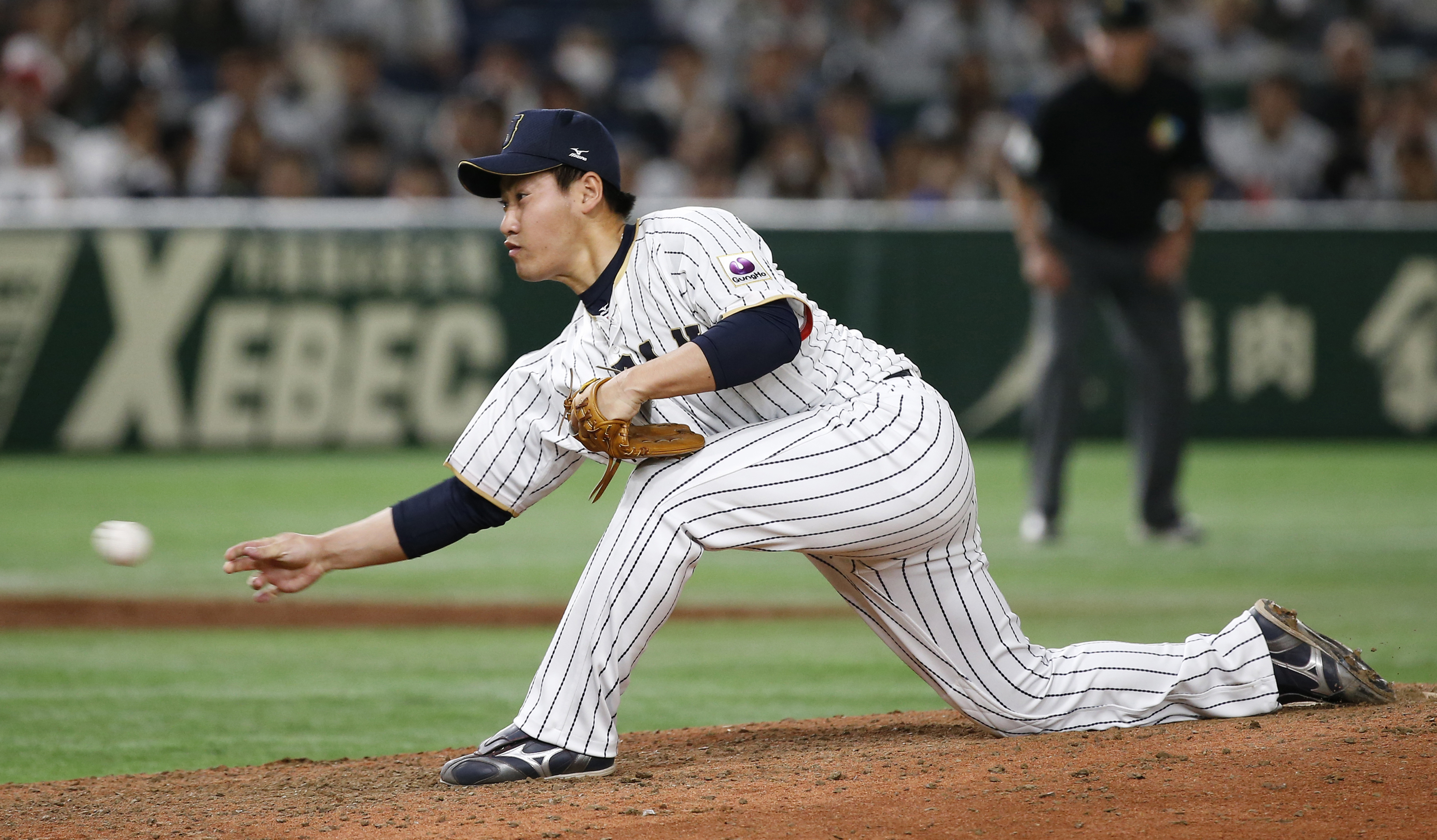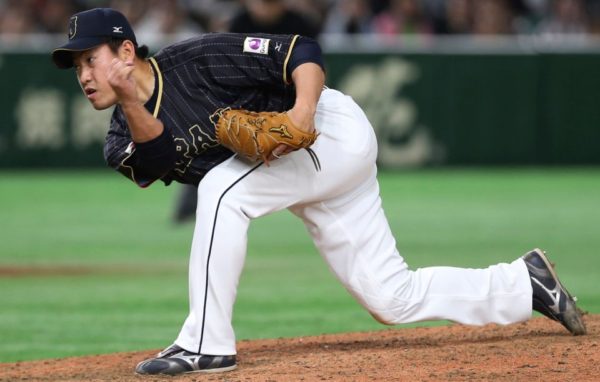What to Make of New Padre Kazuhisa Makita

(Photo by Yuki Taguchi/WBCI/MLB

For baseball folks, Japanese right-hander and recent San Diego Padres’ signee Kazuhisa Makita presents something of an enigma.
There’s his physical profile: just five-foot-ten and 181 pounds, both of which qualify as undersized by the standards of those who take major league mounds on a consistent basis (he stands a decent chance of being the smallest pitcher on the Padres’ roster come spring).
There’s his mechanics: one of the more extreme submariners in recent memory, with a release point that slots well below his kneecap every time he delivers a pitch.
And there’s his baseball career to date, one that didn’t begin in Japan professionally until his age-26 season in 2011.
For the first five years of his tenure with the Seibu Lions, he made regular starts with a fair level of effectiveness before transitioning to exclusive work as a reliever in 2016 and finding slugger-silencing success.
All of this adds up to a package of a player with question marks hovering over his head as he makes his way over to America and its Finest City.
Can Makita maintain the effectiveness that made him a household name in Japan’s highest league? Given his stature, can he hold up over the course of a 162-game season? What can fans of the Friars expect of the team’s new Asian acquisition?
Let’s take a look.
Mechanics
Any discussion on Makita has to begin with his most obvious characteristic: his unorthodox release. As can be seen in the video above, Makita’s release point is aggressively below that of most pitchers considered to be throwing sidearm. Brad Ziegler and Darren O’Day throw sidearm. Kazuhisa Makita practically bowls the ball to the plate, in a way the MLB world hasn’t seen since the days of Chad Bradford and the Moneyball Oakland A’s.
The good news: while more than a little weird, it’s also highly deceptive and keeps hitters off-balance. Furthermore, while the sidearm sling may make your own elbow flinch in anticipatory pain, Makita’s limbs have proven durable too, with innings totals providing no indications of long-term injuries to date.
Outside of the unconventional release point, however, Makita’s delivery is fairly straightforward. He maintains balance well over his back leg in the early movements of his motion and generates good drive with his lower half, all while keeping his body on line with the plate. Besides the obvious benefit this has in terms of control (Makita walked just five batters last year over 62.2 innings), his ability to stay low throughout his delivery leaves the right-hander prepared to field his position as needed post-pitch.
It’s a quality that shouldn’t be overlooked, and trust me when I say that Makita is likely to be one of the Friars’ most underrated gloves in the early going of the 2018 season.
Stuff
https://youtu.be/tn9q_gphz7k
Makita brings what is best considered a four-pitch mix onto the field with him. He primarily pitches off a fastball that tops out in the low 80’s — reports from other publications note a ceiling of 85 mph, though I have yet to find video online that clocks him at anything higher than 83 mph — and proves extremely difficult for opposing hitters to elevate.
He also demonstrates a propensity for subtracting speed from his fastball and giving it more of a sinker-type look, further exaggerating his ground-ball tendencies. Either pitch is best used to work ahead of and away from hitters, and the strict fastball proves especially effective when thrown up and in, generating uncomfortable looks and weak contact from batters because of the extreme change in eye level from release point to plate (see the pitch to Andrelton Simmons at the 1:14 mark above).
Makita pairs those two offerings with a change-of-pace curveball and slider that function more as change-ups because of his low arm slot. Video that I’ve seen has clocked this off-speed offering at anywhere from 63-69 mph, although the pitch will sometimes come in slow enough that the radar gun doesn’t appear to recognize it as a pitch. The point is, it’s slow, and can be highly effective when thrown in the right spots. That being said, it’s hard not to see a power-hitting lefty (I envision Bryce Harper here) launching one of these offerings to the moon if Makita isn’t careful.

Projection
Is Makita going to blow hitters away? Absolutely not – he hasn’t struck out more than five batters per nine innings since 2012, and I see that number remaining the ceiling for his swing-and-miss skills here in the States.
That being said, what Makita does best is frustrate. Despite throwing slower than many local high school arms, the right-hander’s offerings play up because of his unique arm slot, and he does a tremendous job of keeping opposing batters both uncomfortable and off-balance. The result: a bevy of choppers and slow rollers that could run his ground ball rate well north of 60 percent.
As a comparison, look no further than the aforementioned Bradford. While significantly larger physically, Bradford put up radar gun readings that were eerily similar to those of Makita, and his arm slot remains the only one of note that would register in the same zip code as the Japanese submariner. In his own age-33 season with the Baltimore Orioles in 2007, Bradford threw to the tune of a 3.34 ERA and 62.2 percent ground ball rate over 64.2 innings.
Ultimately, I would expect similar, if slightly improved, numbers from Makita in his debut season in San Diego. Given his recent performance both in Japan and on the global stage in the recent World Baseball Classic, I see few reasons he can’t find success stateside. As Makita makes his way as another cog in the Padres’ ground ball machine, I would bet on 70 innings or so and an ERA in the low 3.10’s in 2018.
At a price of just $4 million over the next two seasons, I’d say that’s a signing worth making.
Noah is a current undergraduate at the University of San Diego. In addition to his classes as a Business Economics student, Noah serves as the scouting director for the nationally-ranked USD baseball team and as an NFL correspondent with The Mighty 1090. You can follow him on Twitter @thebackseatlamp